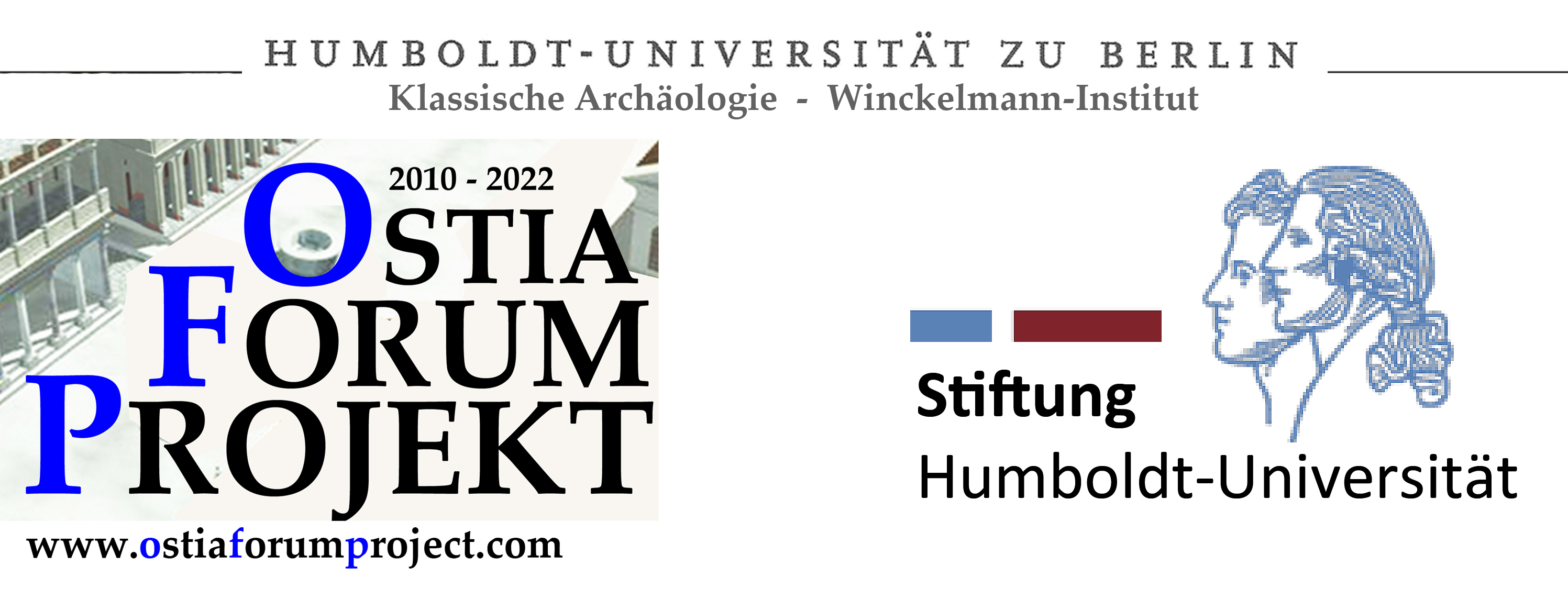The Capitolium has always formed part of the research on Ostia’s Forum conducted by the OFP. But the amount of work, so far, never gave space for a closer look on its history and state of preservation. However, since 2009, the Capitolium has always been part of the documentation, which means that until today we already have a good amount of material to work on. At the same time, it became clear that the Capitolium needed to be researched for itself, which resulted in a PhD-project that started in 2020 and deals with the appearance of the Hadrianic Forum until Late Antiquity.
2019
Besides the excavation, parts of the team documented the large amount of marble fragments. Most of those fragments were stored in the adjacent rooms in the Forum by the excavators in the beginning of the 20th century. However, for a few pieces, it is possible to reconstruct their original (find)-context, before they were stored there. Dealing with those fragments, means to take into account that we also have possible finds from the excavations from the 19th century as well as undocumented finds from the later excavations. These can be be identified on the old photographs from those times – partly in their original context (for example in a lime kiln in the Forum).
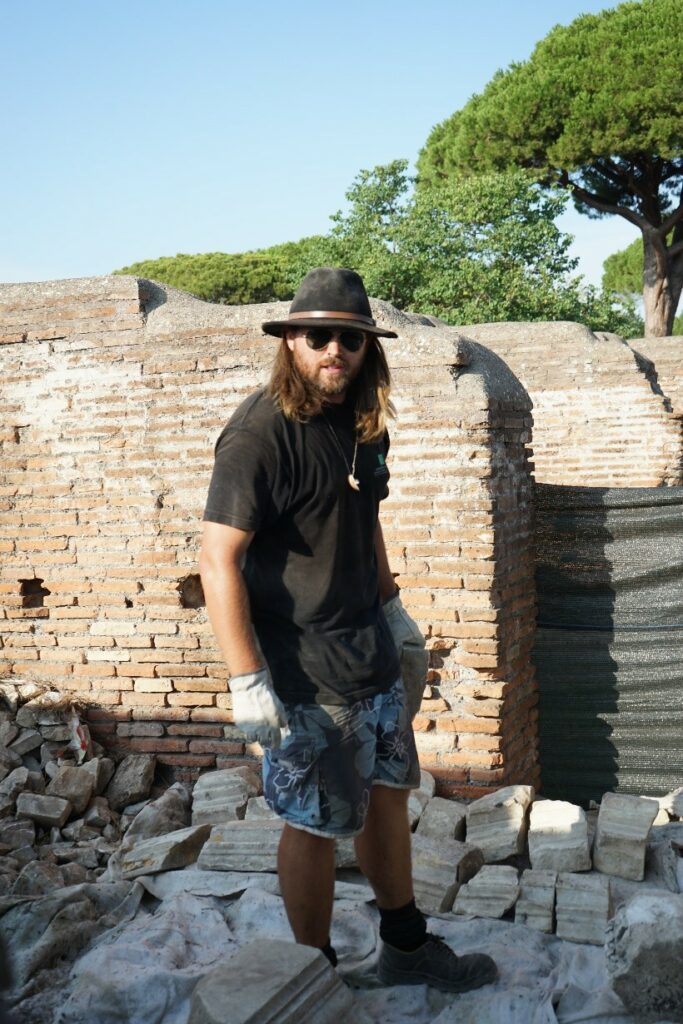
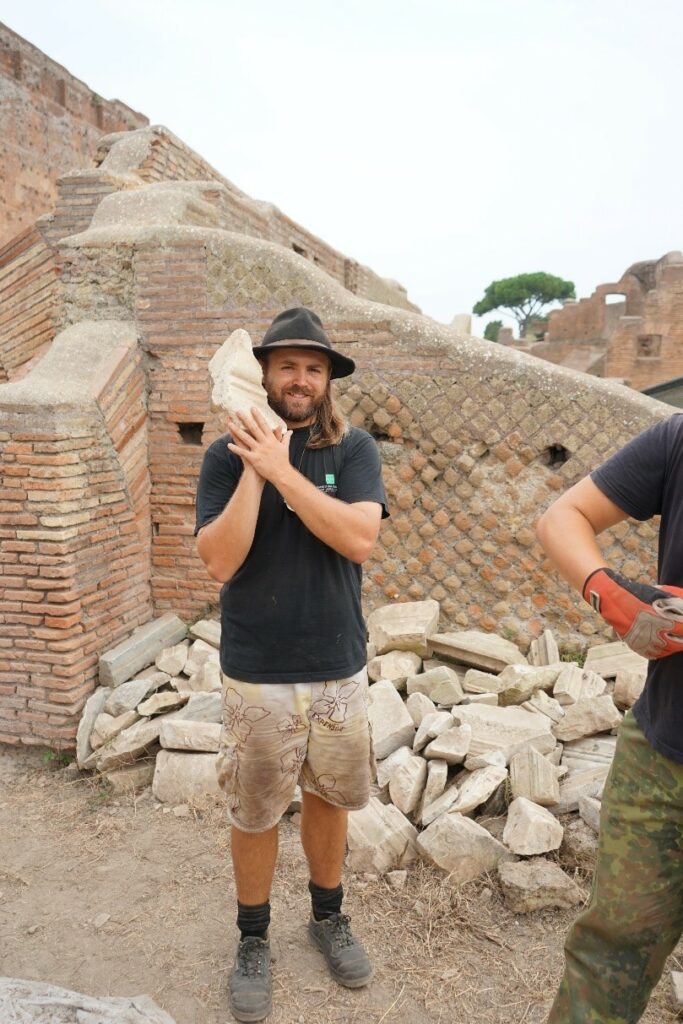
Of course, in that mass of marble fragments, there are supposed to be fragments belonging to the Capitolium, the Forum’s Porticoes and other monuments.
There, we have fragments of the altar: the undecorated cymatium also resembles strikingly to the presumed frieze of the Capitolium as the measurements and material fit 100%!
As a consequence, it became clear, that this monument again needed to be reconsidered: that is to say that either the frieze (the bucranium piece) is not part of the temple’s frieze or the altar is not an altar.
Both possibilities are dealing with an unusual phenomenon. On the one hand, the motifs like the weapons of Athena in combination with the bucranium and the undecorated cymatium, existing also as corner pieces, seems very plausible for a temple’s frieze. On the other hand, the format of the postulated altar is getting in a rectangular due to the connection of Athena’s shield with the eagle fragment and a postulated balanced motif. A very good comparison in general could be found in the Boccus-Monument. For several other reasons the actual hypothesis is not seeing the fragments as parts of the Capitolium’s frieze.
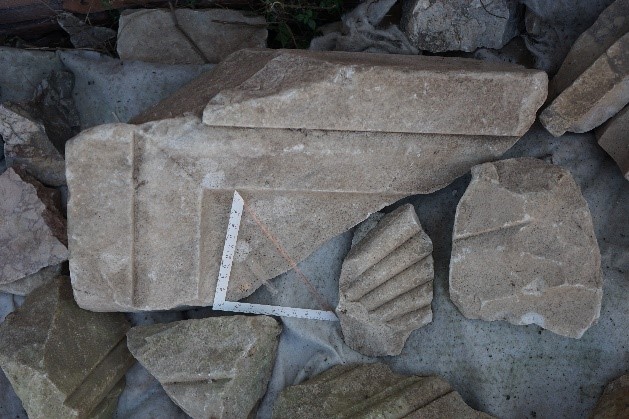
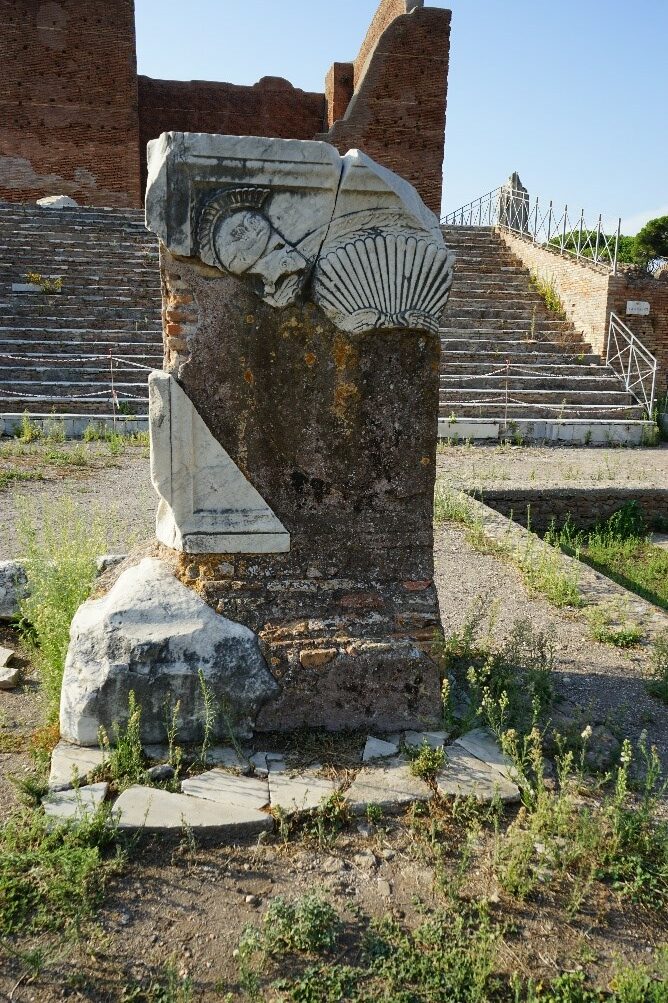
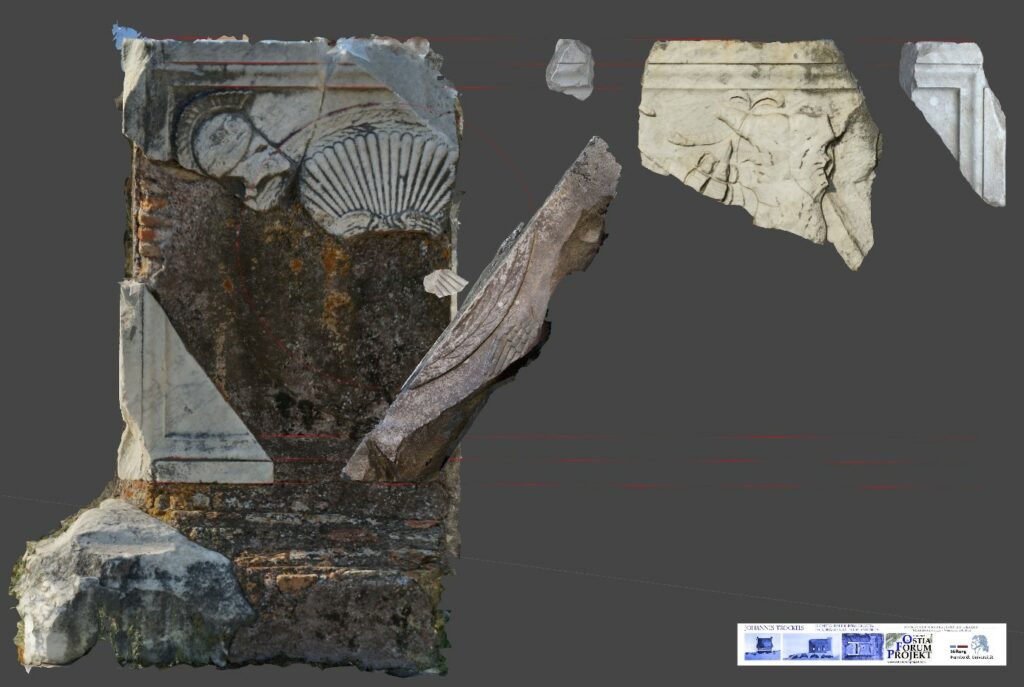
A large fragment of the pilaster capital of the Capitolium is able to tell us a lot about its placement on the temple‘s brick body.

The capitals were inserted into the cut-outs in the brick body of the Capitolium and in most cases fixed with two dowels. In the preserved fragment in the Forum, we can see that there was also a dowel hole in the top surface of the capital that served as connection to the three-fascia-architrave. The analysis of the cut-outs in the temple‘s brick body are showing a dovetail groove. It seems very probable that the capitals were inserted from above on their places.
2020
In 2020, I tried to get clearance in the question on the measurements of the architectural decoration of the temple. Especially the capital’s height is hitherto not known exactly. Therefore, I made a lot of photos from the temple’s crown part and during the post excavation work, I added additional photos, which was taken by a copter in a former campaign. In general, it was not an easy task processing the data and it took a lot of time to find appropriate photos as lots of the existing photos in good angles were not sharp in their detailed resolution. The consequence is an unsharp model, but it is sufficient to measure with a reference (the clear red ‘restauro-1966’-bricks: those were set in the restored Capitolium wall to point out where parts or walls were repaired) in the model, of which I know the exact measurements. This allowed me to measure in the created 3D-model. Additionally, I know the width of the pilaster columns and the width of the capitals, which is delivered by drawings from architects from the first quarter of the 19th century and are confirmed by the fragment in the Forum. At this working state, the measurements are not easy to capture in the model (mostly it is difficult to estimate from which point in the dowel hole the measurement should start) but their accuracy grade is +-2cm. In addition, it is to remark that it should be possible with the dowel hole on the capital fragment and model of the Capitolium crown in a higher resolution to find the exact placement of the existing capital(fragment).
In this example for a photogrammetric method it should be pointed out, like for every visual operating method, that you can only work with the for the capture device visible surface. A laser scanner for example is dependent on its position. In this model here, we can see that the inner edges of the cut-outs are not visible in a clear resolution, which is caused by shadow and visual axis of the camera.
The key measurements are the following (see also image): three-fascia-architrave ca. 62,8 cm; capital height ca. 130 cm; capital width including the joint surface for the revetment plaques (complete width of the cut-outs) ca. 168,5 cm; distance between dowel holes for the pilaster (width of the pilaster) 107,59 cm; width of the ‘restauro-1966’-brick 9,8cm.
In the next campaign I will of course try to create a model in a higher resolution (as there is also a pigeon visible in the actual).
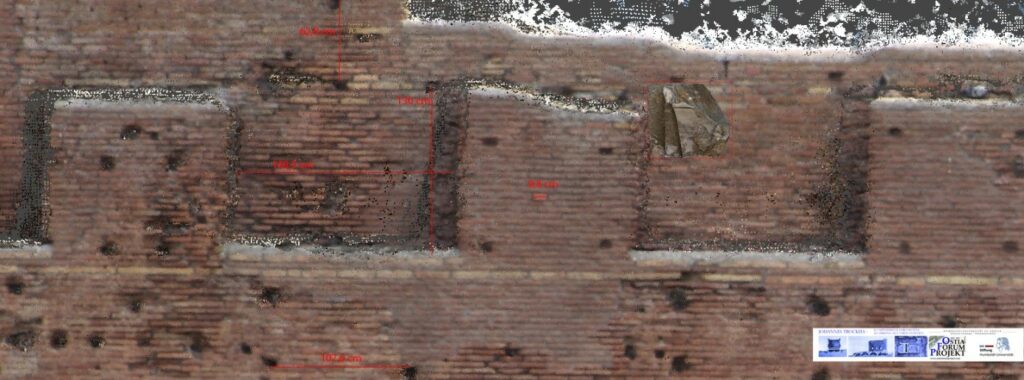
A single fragment is basically able to tell you a lot about its history if you ask kindly for it: we found lots of fragments from pilasters and columns. They differ in terms of material, size and fragmentation/preservation. Two of those are in good condition and are fitting to the columns of the Capitolium. What makes them special is that they are patches and they seem to fit to one another, but one piece is made of Pavonazzetto and the other of Giallo Antico. They possess the same thickness and working technic. The wavy sides are fitting to a luckily still preserved column fragment of the Capitolium, which shows the identical inserting features but in the negative form. Thus, we have prove of a standardized and accurate repairing process and not only through these pieces the maintenance and modification of the Capitolium and its appearance is verifiable.
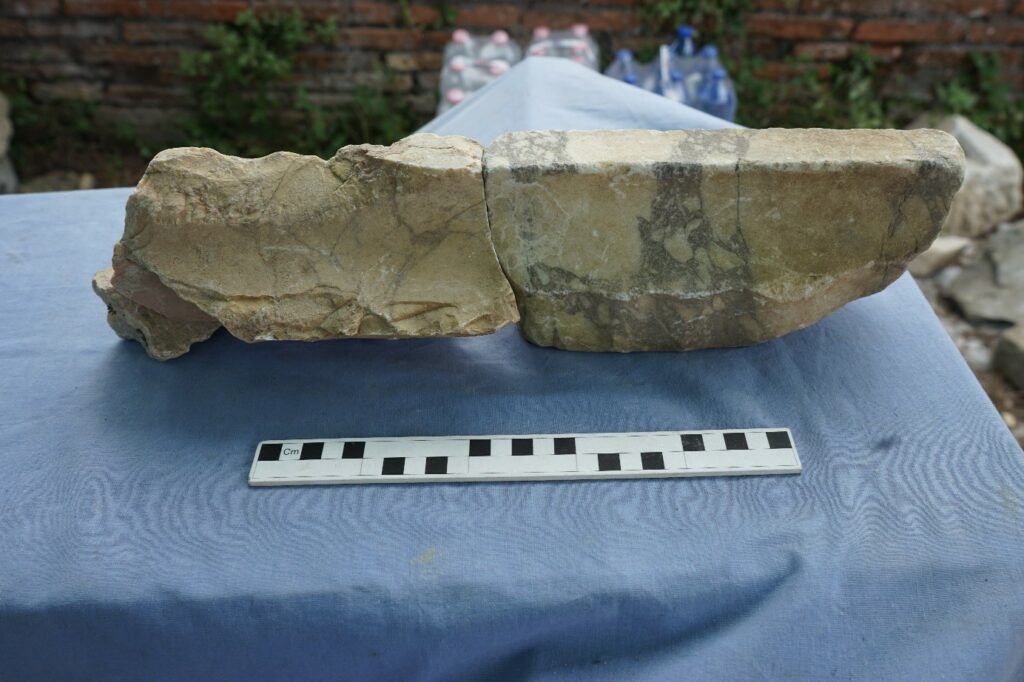
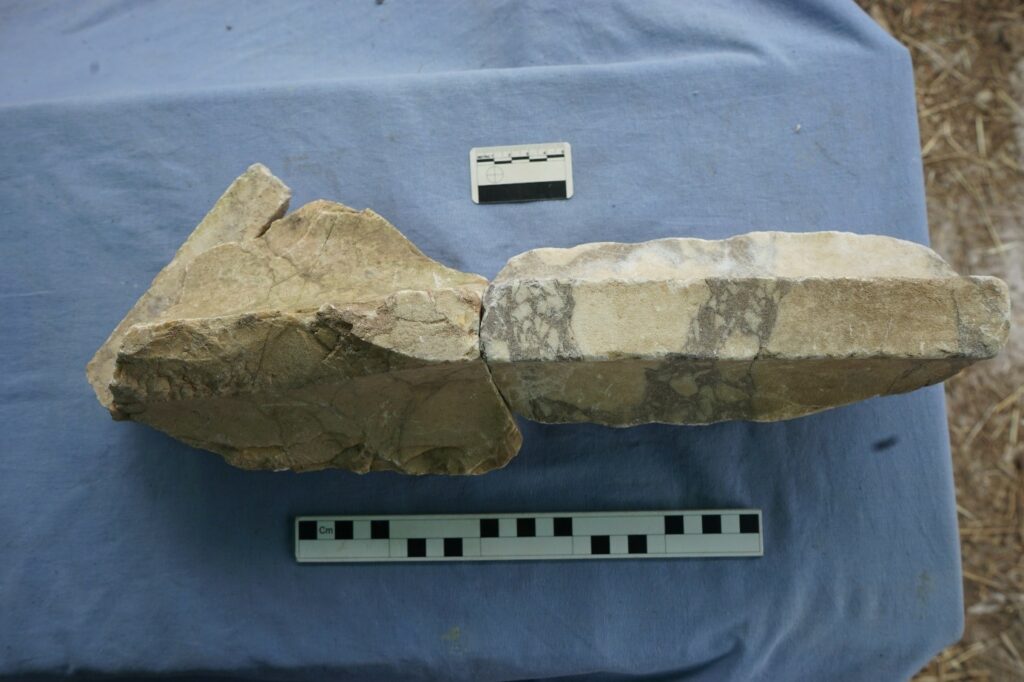
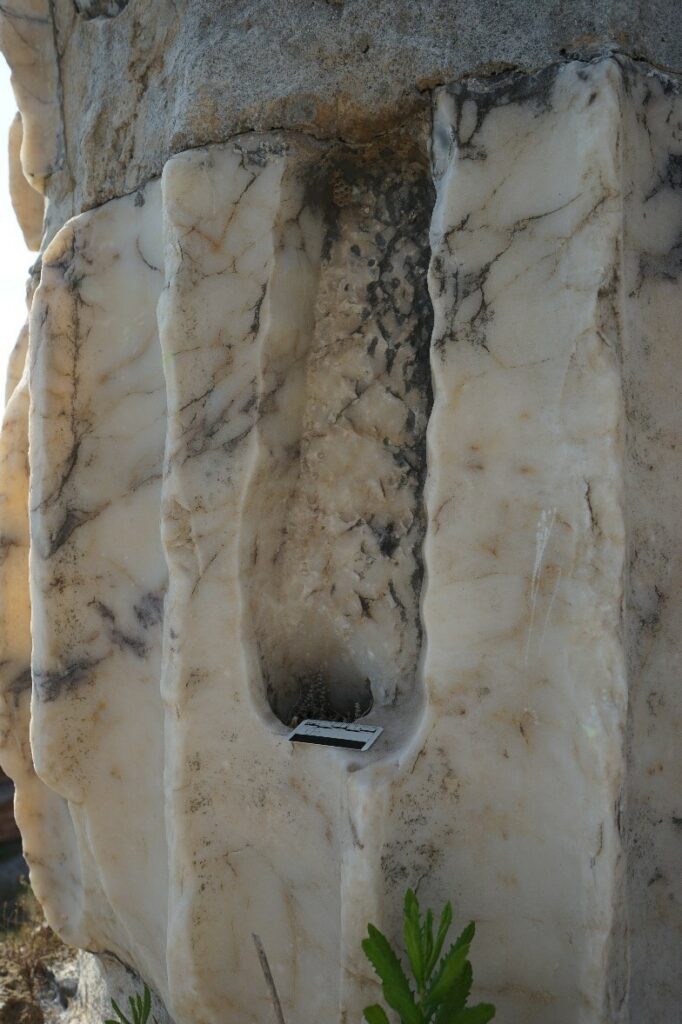
Another fragment is bringing up a discussion about its belonging to the Capitolium. It shows a little bit of a preserved side. There we can identify fur or hair arranged in hook formed locks. Through this fragment leads a 7 cm wide round channel. We can connect this fragment to two already known huge waterspouts. These appear as lionheads. One of them was already found at the beginning of the 19th century (the piece is now in the Vatican), the other in 1938. Both were coming from the Terme del Foro. In 1805, Guattani wanted to ascribe the waterspout, despite its find spot in the Terme del Foro, to the Capitolium. This is still often assumed, even though in combination with the other waterspout, it has been stated otherwise in the revision of the early excavation’s material by Filippo Marini-Recchia. It should be added that the style of the known lionhead waterspout is speaking against a Hadrianic dating as all of the so far known fragments of the Capitolium are of a accurate, classical manner. This third waterspout fragment was found in the material of the Roma and Augustus Temple, which seems to be a little confusing, but could also be arranged by the excavators in the 20th century, who often formed marble deposits with the found fragments. It is at the end still to remark, that we have not had the chance to get access to one of the complete waterspouts. Thus, it is still not possible to compare the measurements and gain certainty for its original context. But at this moment it seems to be from the Terme del Foro (where the waterspouts possibly served as endpoints of water drains to a pool).
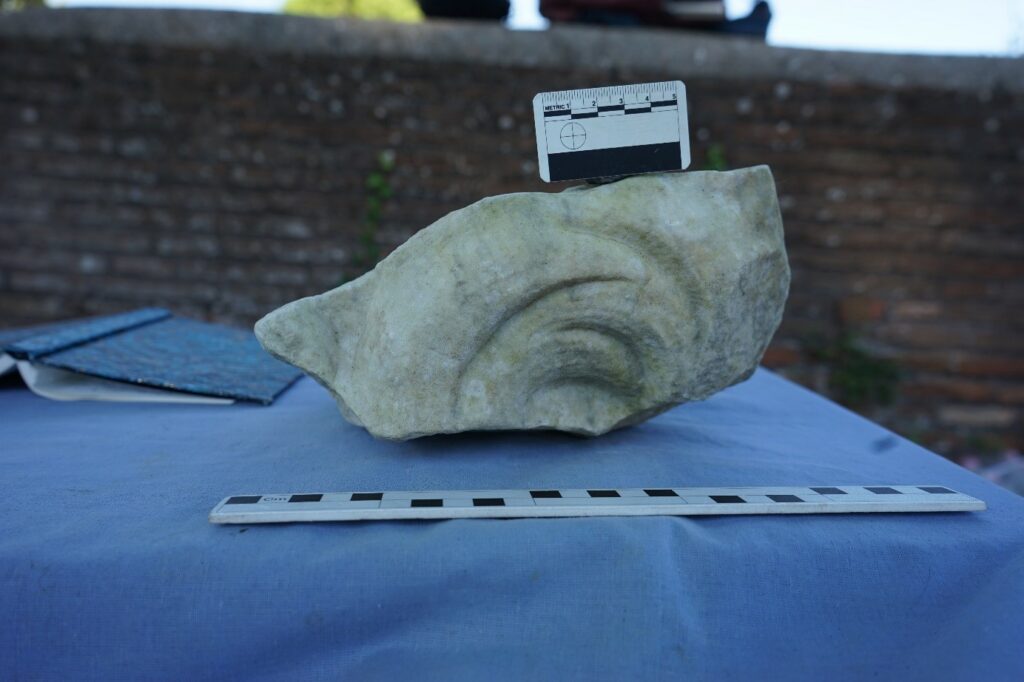
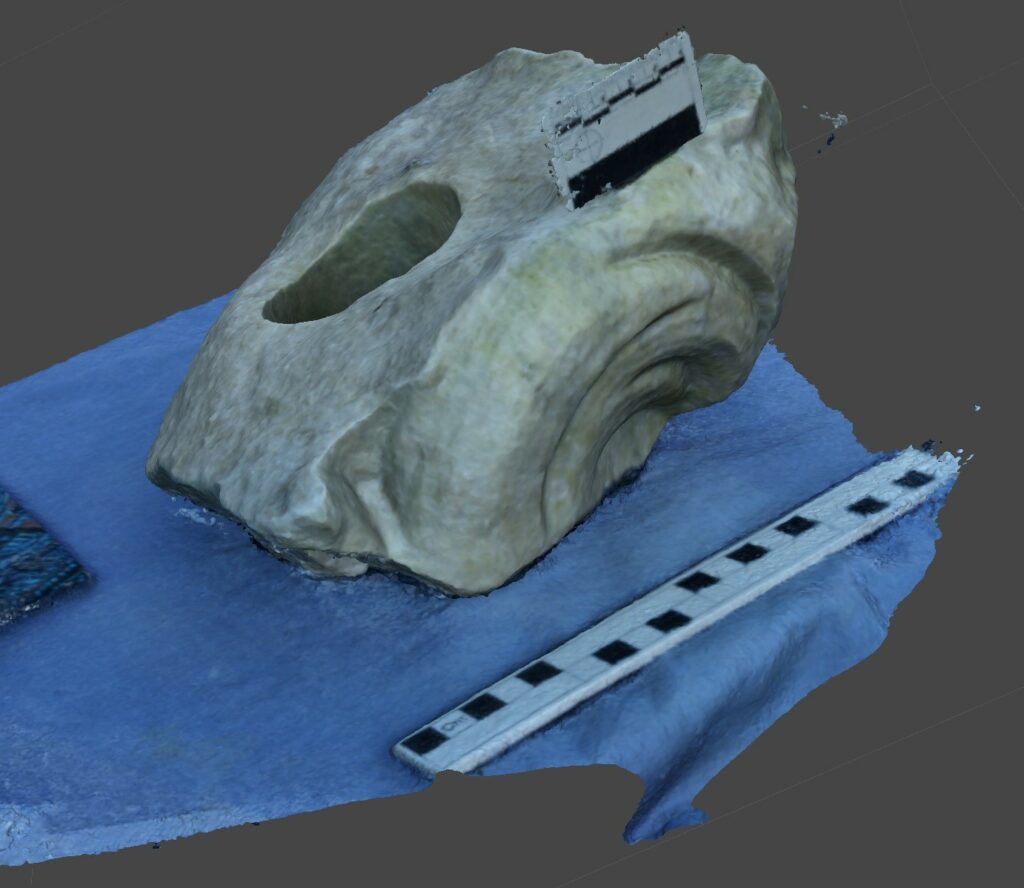
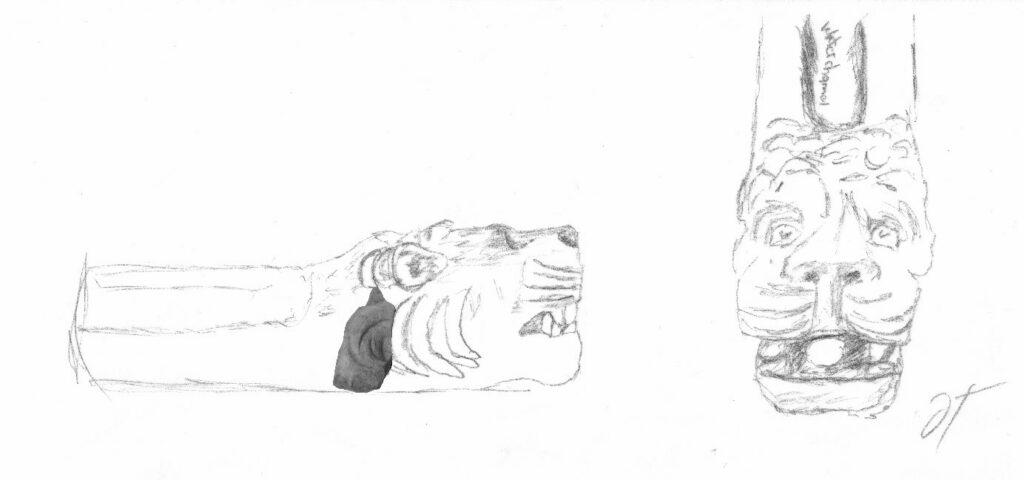
A highlight from 2019
During the excavation and for the first time in more than a century, we brought a sculptural find from the Forum’s area to light. Emerging at first with only a glimpse of wavy hair, which was hidden by a little fragment of a strigils-sarcophagus and accompanied by a funeral inscription, was the portrait of Emperor Hadrian. It took several days to uncover it from the earth. It was placed as filling material underneath a late antique pavement. After its discovery and excavation, the head was directly handed over to the Direction of the Parco Archeologico di Ostia Antica.
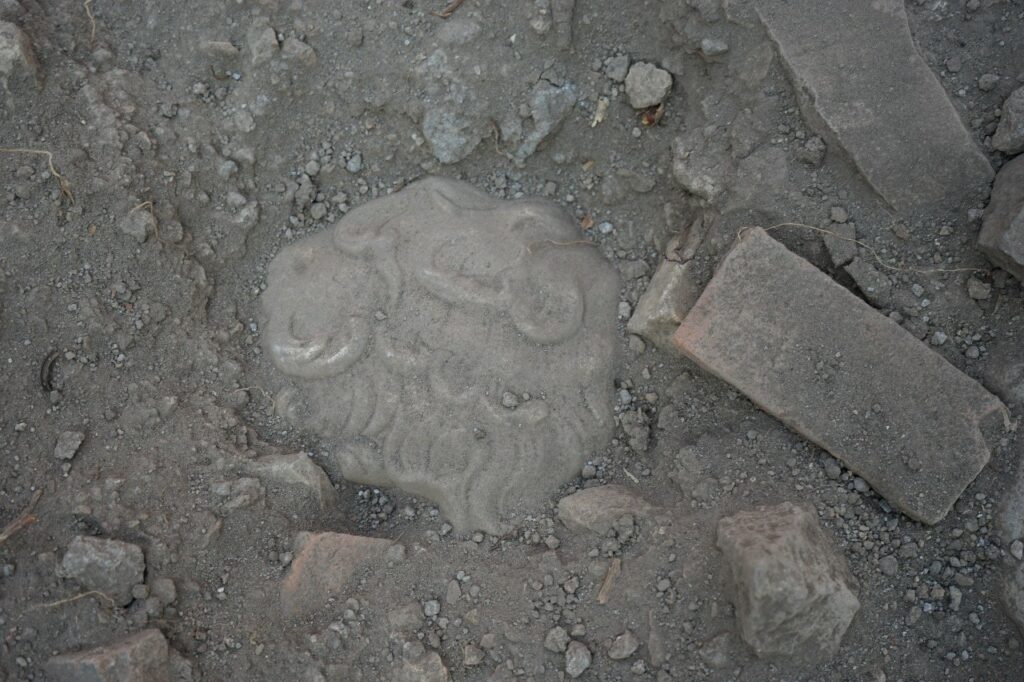
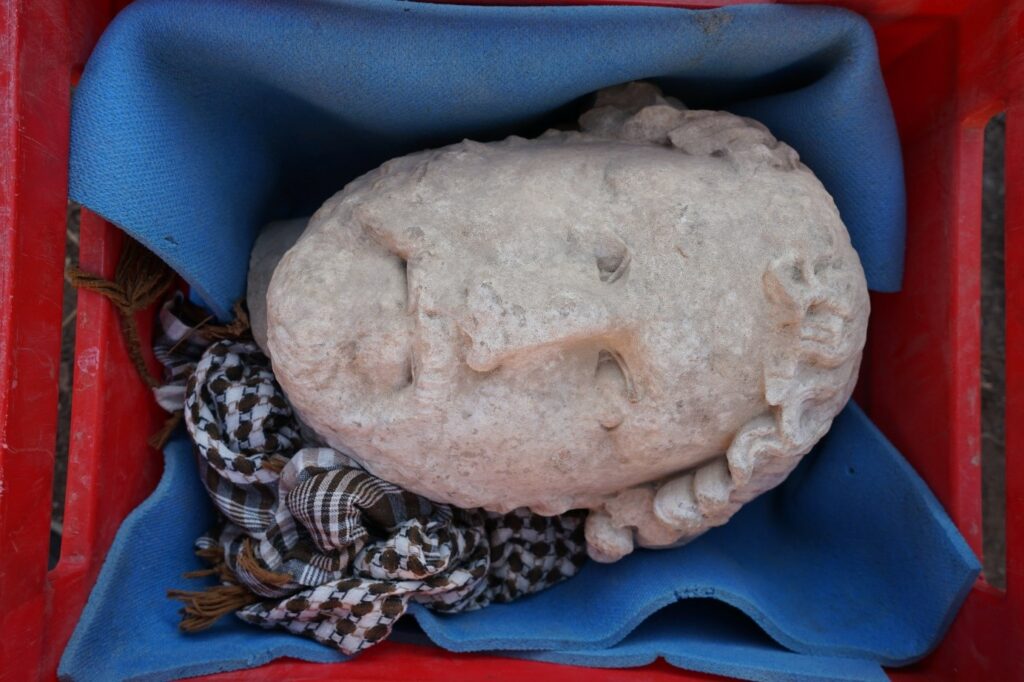
This portrait is a combination (Typen-Klitterung) of two well known types: The main part is copying the type Baiae and parts of the back of the head can be allocated to the type Busti 283.
This marble portrait will be part of a separate article in the near future.
You can find more here.
